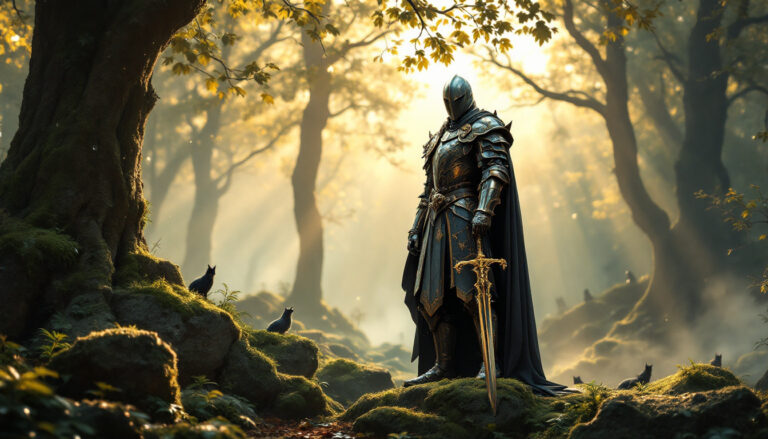Harry Potter and the Order of the Phoenix – A Bold Turn in the Series
Few books in the Harry Potter series mark a turning point as vividly as Harry Potter and the Order of the Phoenix. Serving as the fifth installment, it plunges readers into a darker, more complex narrative where the stakes are higher than ever. With its exploration of political tension in the wizarding world and Harry’s growing internal struggles, this book signals a shift from the whimsical magic of the earlier stories to a tale layered with resistance, power, and loss. J.K. Rowling’s powerful storytelling keeps fans hooked, offering some of the series’ most memorable characters, conflicts, and revelations.
The Shift to a Darker Narrative
In Harry Potter and the Order of the Phoenix, J.K. Rowling takes a stark turn in her storytelling. The book pushes the series into a darker space, focusing intently on themes like control, psychology, and growing pains. It moves beyond the classic good-versus-evil framework and begins to scrutinize the systems at play in the wizarding world, all while exploring the toll of these challenges on Harry himself. It’s a powerful shift that underscores the book’s maturity and complexity.
Introduction to Political Intrigue
One of the central themes in this installment is the Ministry of Magic’s growing interference in Hogwarts. Their encroachment begins with the appointment of Dolores Umbridge, a character who epitomizes authoritarian control. Her rise to power is not just about regulating the school but extends into a larger campaign of propaganda and censorship. The Ministry, refusing to acknowledge Voldemort’s return, attempts to discredit Harry and manipulate public opinion through publications such as the Daily Prophet.
This orchestrated misinformation campaign feels eerily reflective of real-world scenarios. Governments, in moments of unrest, often turn to propaganda to maintain their control, silencing dissenters and rewriting narratives. The Ministry’s actions serve as a harsh commentary on how systems of power prioritize their agendas over truth. For a deeper dive into this theme, the Harry Potter Wiki on Propaganda offers a comprehensive look at how this tactic runs through the book.
Umbridge’s reign at Hogwarts further highlights these dynamics. Her relentless enforcement of Ministry policies, from banning students’ speech to instituting torturous punishments, mirrors how unchecked power can pervade even seemingly insular institutions. The impact on Hogwarts is profound, fracturing the school’s unity. External insights from pieces like “The Ministry is Interfering at Hogwarts” shed light on how these efforts reflect broader societal fears of control and oppression, drawing parallels with authoritarian regimes both past and present.
Psychological Toll on Harry
If the Ministry represents the macro-level challenges, Harry’s personal struggles present the micro-level consequences of this darker narrative. As the series’ protagonist, Harry takes on increased burdens in this book, becoming not just a teenager grappling with normal emotions but also a key figure in the resistance movement. This duality weighs heavily on his psyche.
Harry starts to face intense isolation. Returning from his fourth year after witnessing Cedric Diggory’s death and the reawakening of Voldemort, Harry finds himself alienated. His peers question his truthfulness, the Ministry paints him as a liar, and even his closest friends step cautiously around him. Isolation compounds his nightmares and triggers feelings of self-doubt and anger. Shmoop’s analysis discusses how these themes of alienation fuel a growing divide between Harry and those around him, making him a symbol of resistance but also of loneliness.
Beyond isolation, Harry’s recurring nightmares and flashbacks are direct symptoms of post-traumatic stress. He struggles to find normalcy while carrying the guilt of past failures and the responsibility for future victories. This mental strain is a recurring thread, marking his transition from a boy into a reluctant leader. A detailed exploration of these emotional challenges finds its way into discussions on PTSD and Harry’s development, like in “The Boy Who Lived: PTSD Formulation”. Through Harry’s eyes, Rowling masterfully portrays the real and lasting effects of trauma on young minds.
Yet, Harry’s story in this book is not just one of burdens. It is also about resilience. By the end, Harry learns to lean on his community, form Dumbledore’s Army, and rally others to stand for what is right. This emotional journey cements him as a relatable hero—flawed, tired, and human, but still fighting.
Character Development and Dynamics
One of the greatest strengths of Harry Potter and the Order of the Phoenix is the way it deepens character relationships and introduces dynamics that challenge the norms of friendship, mentorship, and individuality. This installment isn’t just about Harry’s journey; it’s also about the people influencing him, the allies emerging in his darkest hours, and the unexpected heroes finding their own strength.
Key Role of Sirius Black
Sirius Black acts as a crucial figure in Harry’s life in this book, cementing his role as both a mentor and a friend. As Harry’s godfather, Sirius steps into an emotional space that Harry so desperately needs—a parental figure who also treats him with the respect of an equal. Unlike Dumbledore, who maintains a mystique and authority, Sirius provides Harry with candid advice and unfiltered truth. However, Sirius’ influence on Harry isn’t all positive, which adds complexity to their bond.
Sirius encourages Harry to defy authority figures, a trait born out of his own rebellious nature. His disdain for authority is iconic, but it often places him in dangerous situations. In many ways, Harry mirrors this trait in his resistance to Dolores Umbridge and the Ministry of Magic’s interference at Hogwarts. Yet, Sirius’ impulsiveness sometimes leads to questionable decisions; his influence on Harry can be seen as both empowering and reckless. An insightful debate about Sirius’ role in Harry’s life is explored in this feature on Sirius Black’s mentorship.
Beyond Harry, Sirius’ personal struggles also offer a heartfelt narrative. His longing to be actively involved in the fight against Voldemort is palpable, but his confinement to Grimmauld Place limits him, heightening his frustration. These complexities make Sirius’ fate in this book all the more impactful, and his connection with Harry remains one of the most emotionally resonant arcs in the series. To learn more about Sirius’ character and history, the Harry Potter Wiki provides excellent insight.
Introducing Luna Lovegood
Luna Lovegood makes her unforgettable debut in The Order of the Phoenix, instantly adding a fresh perspective to the story. With her dreamy, unconventional outlook on life, Luna challenges societal norms and embraces individuality in ways few characters do. Her presence is a much-needed contrast to the darker undertones of the book, offering readers and Harry a lesson in self-acceptance and belief.
What makes Luna stand out is her unapologetic uniqueness. She lives by her own rules, not caring about conforming to the expectations of others. Despite being ridiculed by her peers, Luna remains firm in her identity, proudly sporting radish earrings and talking about creatures no one else believes in. Her courage inspires belief in the unseen—a theme central to the fight against Voldemort, where the truth is hidden under layers of Ministry cover-ups and denial. As highlighted in this Quora discussion, Luna serves a pivotal role in helping Harry and the others find hope and creativity when it seems impossible.
More than just an eccentric friend, Luna’s insights often cut deeper than expected. She encourages Harry to stay resilient, reminding him that loss is a natural part of love. Her subtle wisdom underscores the larger battle being waged, where belief in a cause outweighs doubts and insecurities. For an in-depth look at Luna and her role in the series, the Harry Potter Wiki entry on Luna Lovegood is a great resource.
Growth of Neville Longbottom
Neville Longbottom’s transformation in this book is one of the series’ most satisfying subplots. Starting as a shy and awkward boy often mocked for his clumsiness, Neville takes a stand in Order of the Phoenix, proving himself as a resilient and courageous member of Dumbledore’s Army.
His growth begins with his determination to master spells under Harry’s guidance during D.A. meetings. While Neville’s magical abilities had been mediocre at best, his newly found confidence unlocks a latent competence that surprises even his harshest critics. This progress is symbolic of a larger theme in the book: the fight against oppression isn’t just for the strong or the famous—it’s for anyone willing to rise when the time calls. An excellent analysis of Neville’s development can be found in this Reddit discussion on his character arc.
Neville’s bravery extends beyond the classroom. His fight at the Department of Mysteries proves that even the seemingly ordinary can achieve extraordinary feats. His struggle is deeply personal, tied to the tragedy of his parents’ torture at the hands of Death Eaters. This backstory adds a compelling layer to his decisions and resilience, making him one of the series’ unsung heroes. For those interested in learning more about his journey, the Harry Potter Wiki page on Neville offers more detail.
Neville’s arc in Order of the Phoenix reminds readers that courage comes in many forms. It isn’t just about grand gestures but also quiet persistence and unwavering loyalty. This is what makes him such a beloved character as the series unfolds.
Themes of Rebellion and Sacrifice
In Harry Potter and the Order of the Phoenix, themes of rebellion and sacrifice drive much of the story’s emotional depth. The students’ resistance against oppressive authority and the heartbreaking cost of their struggle are woven together, making this installment of the series both thrilling and deeply poignant.
Formation of Dumbledore’s Army: A Symbol of Resistance
When Dolores Umbridge seizes control of Hogwarts under the Ministry’s directives, students are left vulnerable. Her refusal to teach practical defense against the dark arts puts them at risk of being unprepared for the mounting dangers outside the school walls. The formation of Dumbledore’s Army (D.A.) becomes not just a rebellion against her totalitarian rule but a collective declaration of self-empowerment.
Dumbledore’s Army, spearheaded by Harry and supported by Hermione and Ron, stood for more than just combat lessons. It symbolized courage and the willingness to fight back when systems fail. This grassroots movement hid in the Room of Requirement, a sanctuary for their covert meetings, and represented the students reclaiming their agency. Harry became not just a teacher, but also a leader for his peers, sharing his own experiences to help prepare them for the growing shadow of Voldemort.
The name itself, “Dumbledore’s Army,” was a tongue-in-cheek defiance aimed at Umbridge and the Ministry’s fears of rebellion. Yet, it grew into something far more important. Members like Neville Longbottom and Luna Lovegood found confidence and strength within the group, proving how collective action can empower individuals who often felt sidelined or underestimated. Insights from the “Harry Potter Compendium” discuss how D.A. played a pivotal role in the Battle of the Department of Mysteries, highlighting how their secret gatherings turned theoretical lessons into necessary action.
Dumbledore’s Army reminds readers of the power of grassroots rebellion. Much like real-world movements that arise in opposition to oppressive regimes, their courage solidified the idea that resistance doesn’t always have to come from those in positions of power—ordinary individuals with determination can make a significant impact too.
Tragic Elements of Sacrifice: The Emotional Impact of Key Losses
The series knows how to deliver emotional blows, and in this book, the cost of resistance becomes difficult to ignore. Sacrifice is not just a lofty concept but a heartbreaking reality for many of the characters. The tragic loss of Sirius Black is the most deeply felt in this story, leaving not only Harry but readers grappling with unfair and irreversible consequences.
Sirius, both a father figure and a trusted confidant to Harry, becomes a victim of the war. His death at the hands of Bellatrix Lestrange during the chaotic battle at the Department of Mysteries is sudden and senseless, underlining the brutal cost of defying the Dark Arts. Harry, already weighed down by the burden of leadership and responsibility, spirals into guilt. Could he have saved Sirius? Was the mission avoidable? These questions are emblematic of how sacrifices haunt survivors long after they occur and emphasize the book’s darker tone.
The emotional weight of these losses is further explored in fictional discussions like “The Saddest Harry Potter Deaths” which argue Sirius’s death as a turning point—not just for Harry, but for readers who see that even cherished characters are not immune to the realities of war. Sirius represents the consequences of fighting for freedom: the unwillingness to sit on the sidelines often carries the ultimate risk.
These moments of sacrifice elevate the story’s stakes, showcasing how war spares no one. Each loss feels personal, creating connections between the narrative and readers who may draw parallels with real-world sacrifices made in the name of freedom or justice. This book doesn’t shy away from the truth that rebellion comes with heartbreaking losses, yet it is these losses that forge resilience and purpose among those who continue to fight.
The Book’s Legacy in the Series
Harry Potter and the Order of the Phoenix stands out as a pivotal installment in the series, enriching the wizarding world while paving the way for future conflicts. With its broader scope and deeper revelations, the book leaves a lasting impact on both the characters and the overarching storyline.
Expansion of the Wizarding World
This book introduces readers to new magical locations and cultural elements, broadening our understanding of J.K. Rowling’s enchanting universe. One of the most significant additions is Number Twelve, Grimmauld Place, the ancestral home of the Black family and an important HQ for the Order of the Phoenix. Its hidden location and protective enchantments reflect the growing need for secrecy and strategy as Voldemort regains power. For more details about this iconic location, you can visit the Harry Potter Official Fact File.
Another memorable addition is the depiction of the Ministry of Magic. While the institution has been mentioned in earlier books, this one takes readers deep into its inner workings, especially through scenes in the Atrium and the Department of Mysteries. These spaces, laden with intrigue and danger, are central to the book’s climactic moments and provide a peek into the bureaucratic and occult corners of the wizarding world. An in-depth description of the Atrium can be found on the Harry Potter Wiki.
There’s also a deeper exploration of magical governance, ethics, and societal dynamics. The greater focus on corruption and inefficiency within the Ministry juxtaposed with grassroots resistance paints a layered picture of both the magical world and its striking parallels to real-world systems.
The book also embraces smaller magical quirks that breathe life into the wizarding experience. From Extendable Ears to secret meetings in the Room of Requirement, it showcases inventive magic in everyday rebellion.
Pivotal Plot Points
The story advances several critical plotlines, positioning Harry and his allies for the challenges to come. Among the most important is the revelation of the prophecy stored in the Department of Mysteries. This prophecy, foretelling the destined conflict between Harry and Voldemort, fundamentally reshapes Harry’s understanding of his role in the battle against dark forces. Shared in cryptic language, it reveals that Voldemort marked Harry as his equal, tying their fates together. A detailed explanation of the prophecy’s significance is available on the Harry Potter Wiki.
The retrieval of the prophecy becomes the focus of Voldemort’s operatives, the Death Eaters, setting the stage for the climactic later battles. This chase elevates the stakes, placing Harry’s friends in danger and emphasizing the idea that the fight is no longer isolated to select individuals but a shared ordeal.
Another standout plotline involves Harry’s growing frustration with Dumbledore, who keeps his distance throughout much of the book. Dumbledore’s choice not to share vital information feeds Harry’s doubts and eventual anger, making their relationship more complicated and emotional.
Finally, the formation of Dumbledore’s Army is a major step forward in Harry’s character development. It positions him as a leader rather than just a participant in events. By taking on the responsibility of teaching his fellow students, Harry discovers his potential as a mentor and organizer, a role that will prove critical in the fight to come. You can find more context about the group and its origins in the Harry Potter Compendium.
These moments not only define Order of the Phoenix but also set the tone for future confrontations, transforming it into a cornerstone of the series.
Conclusion
Harry Potter and the Order of the Phoenix represents a transformative moment in the series, merging adolescence with the weight of rebellion and sacrifice. The deeper character bonds, moral questions, and an unflinching look at systemic failures make it an unforgettable chapter in Harry’s journey.
This book forces readers to confront powerful realities: the cost of resistance, the perils of unchecked authority, and the resilience found in unity. Whether you’re drawn to its layered themes or its fast-paced conflicts, it’s impossible to ignore how this installment reshapes the stakes.
What are your thoughts on the emotional depth and darker tone of this book? Share your perspective below or reflect on how its themes connect to today’s world.







